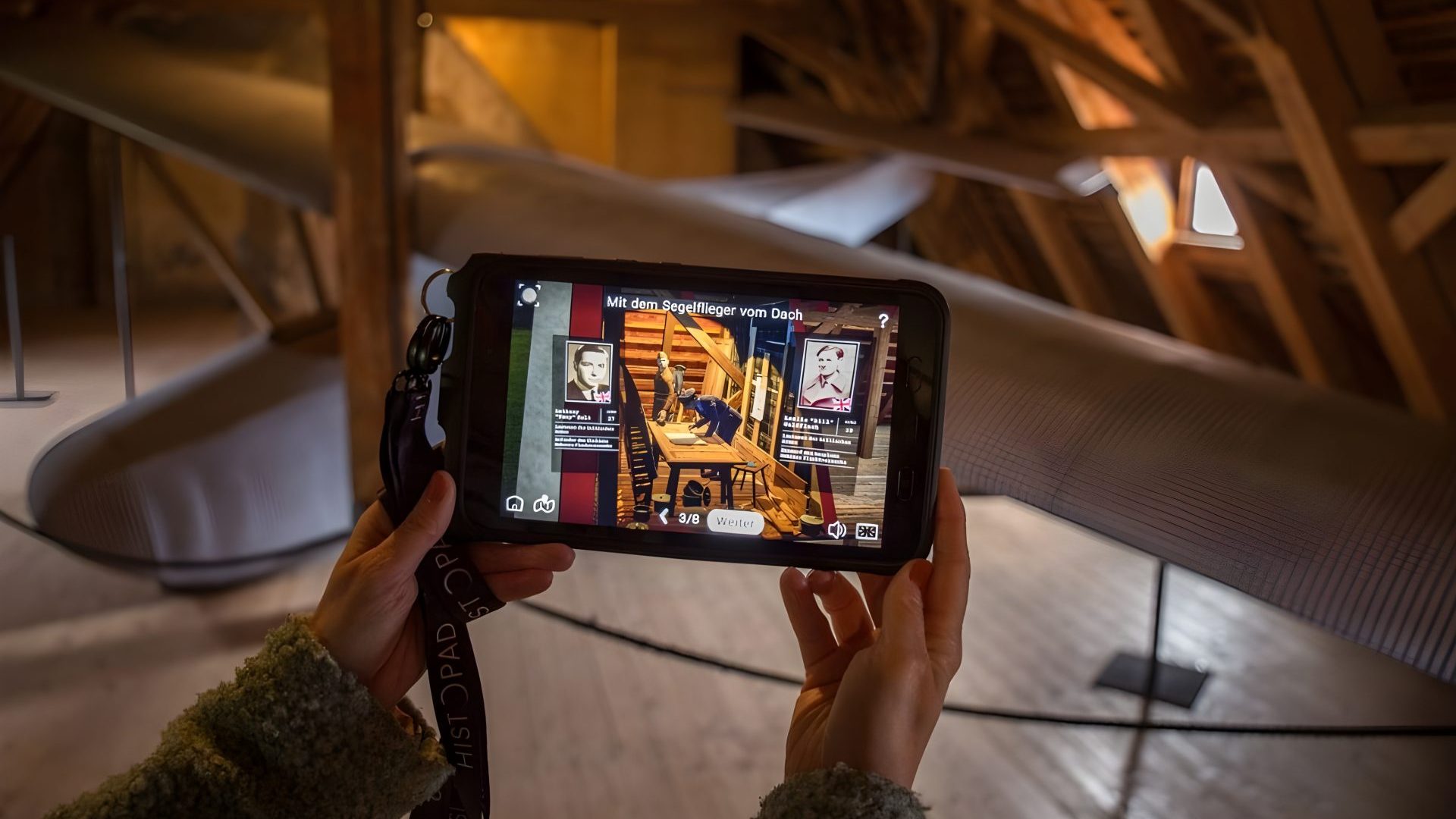At Colditz, the vast castle dominates the town. Here you can stand on one spot, scan a reader and experience three different epochs. The gadget that makes it possible is a hand-held tablet called the Histopad.
The first trail celebrates the castle’s heyday when Princess Sophie, Electress of Saxony, was in charge, 1591-1622. A second strand describes the asylum “for the incurably insane“, who were incarcerated in their hundreds from 1829-1933. But I’m here for the third, when this place was known as Oflag 1Vc, a prisoner-of-war camp for elite Allied officers, run by Nazi guards and Gestapo spies during the second world war.
And now I’m transported back to my own childhood, chatting with a couple from Leeds about how we used to watch Colditz on TV in the 1970s. The series showed death-defying escapes, and now we are reliving them, here in the place where they actually happened.
Meanwhile two young German boys and their grandmother are using the Histopad to search for a virtual escape kit – compass, money in Reichsmarks, forged passports, fake train tickets and maps sketched from memory. “It’s like Pokémon Go!“ they chirped excitedly.
The Histopad transforms the bare attic into the British officers’ quarters. Here they wrote coded letters to wives and sweethearts, produced plays and wrote novels. Scotland’s 17th Lord Elphinstone painted a brace of pheasants as a mural on his cell wall. War leader Winston Churchill’s nephew Giles Romilly, a Times journalist, took notes while secretly listening to the BBC on a homemade wireless.
In typically British style, the PoWs organised a committee to plot escapes, chaired by Captain Pat Reid. They founded a new branch of the Bullingdon Club, Oxford University’s notorious drinking gang. The top-brass prisoners recruited their orderlies to help by stealing food, German guards’ uniforms and metal hooks for picking locks.
Digging tunnels, impersonating laundry workers, hiding in straw mattresses, abseiling down high walls before the searchlight swept across the castle’s facade – the escape committee’s ingenuity often defeated the guards. But most of the 132 escapees were caught.
Among the 11 who succeeded was Airey Neave, who later became the shadow Northern Ireland secretary in Margaret Thatcher’s Conservative Party. He was killed by an Irish Republican bomb in the car park of the House of Commons in 1979.
Perhaps the most daring breakout never actually happened. It was overtaken by events when the US Army liberated Colditz on April 16, 1945. RAF Flight Lieutenant Bill Goldfinch had designed and built a two-person glider, the “Colditz Cock”. He planned to launch from a runway improvised by balancing tables together on a gable-end, using pulleys and a bathtub full of concrete.
Suggested Reading


How to save the newsroom (from itself)
Fast forward to 2012 and a Channel 4 film crew re-created the Goldfinch glider, using original materials – wood from the prison workshop and bedsheets stiffened by painting on a coating of porridge. The crew were crash dummies – just in case it did not fly.
Then it’s down to the wine cellar, to an exhibition of photographs taken by Robert Capa as he advanced through Europe with the US Army in 1945. The Colditz PoWs welcomed their liberators. Capa captured the joy on their faces.
The civilian population looked less ecstatic. Stunned, sullen and starving, they must have feared the allies would exact revenge for the Nazi atrocities.
And here by the gatehouse are some grim reminders of those atrocities. In a dark cellar, piles of grey mattresses. There are 84 of them, each representing a person with mental illness or learning difficulties. The Nazis murdered them here, calling it “euthanasia”.
A memorial tablet reminds visitors that this place was also a staging post on the way to the concentration camps for communists, Jews, Roma, homosexuals and opponents of Adolf Hitler who were gassed, starved and worked to death in their millions. The inscription reads: “Their sacrifice – a reminder and a warning to us”.
Jane Whyatt has worked as a journalist, newsreader and independent TV producer



